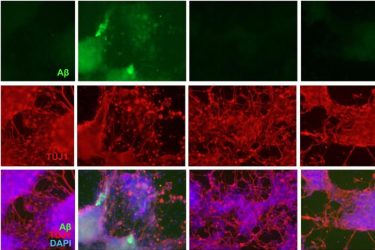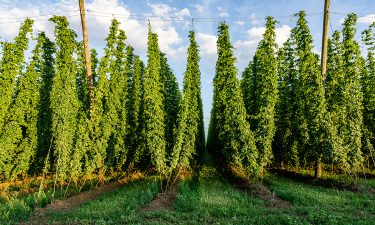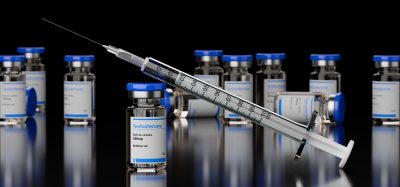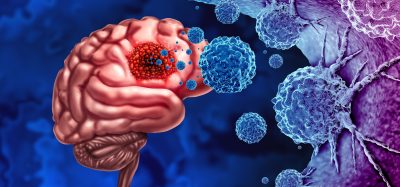Could drinking green tea, red wine and beer prevent Alzheimer’s?
Posted: 11 January 2023 | Izzy Wood (Drug Target Review) | No comments yet
In this article, Drug Target Review’s Izzy Wood reviews some of the latest Alzheimer’s disease research, highlighting the progress that has been made toward new, more unique therapeutic strategies against Alzheimer’s.


Alzheimer’s disease remains one of the largest challenges for the global ageing population. In this article, Drug Target Review’s Izzy Wood reviews some of the latest research, highlighting the progress that has been made toward new, more unique therapeutic strategies against Alzheimer’s.
One of these unique strategies include a finding from Tufts University, US, where researchers found that using compounds from green tea and resveratrol (found in red wine) could reduce sticky beta amyloid plaque formulation in diseased brains.
Earlier in 2022, the team used a three-dimensional model of living human brain cells to show that the common herpes virus could induce plaques in the brain associated with Alzheimer’s disease.
Following research aimed to understand what could slow the progression of the disease. They tested 21 different compounds in Alzheimer’s-afflicted neural cells in the lab, measuring the compounds’ effect on the growth of sticky beta amyloid plaques.
The study, published Free Radical Biology and Medicine,1 highlighted that two common compounds: green tea catechins and resveratrol (found in red wine), reduced the formation of plaques in those neural cells.
Furthermore, the scientists found some of the 21 compounds tested reduced the disease progression by acting as anti-viral agents, slowing Alzheimer’s induced by the herpes virus.
Compounds like green tea catechins and resveratrol that show some efficacy and are known to be safe and easily accessible could be taken as a supplement or consumed as part of one’s diet”
However, finding a compound “that could diminish the plaques regardless of the virus component would be ideal, because that would show that regardless of the cause of Alzheimer’s, you might still see some kind of improvement,” said Dana Cairns, research associate in the Kaplan Lab in the School of Engineering and led the research.
Initially, the screening was carried out in simpler models and the compounds that had a positive effect were then tested in the three-dimensional (3D) neural tissue model.
The 3D tissue model was created using a non-reactive silk sponge seeded with human skin cells: through genetic reprogramming, the cells were converted into neural stem cell progenitors. These cells grow and populate the sponge, allowing for a 3D network formation of neurons similar to what you would see in the human brain.


“In the case of compounds that passed the screening, they had virtually no plaques visible after about a week,” said Dana Cairns. This image shows effects of resveratrol compared to control. Photo: Courtesy of Dana Cairns
In addition to the green tea compounds and resveratrol, they found curcumin from turmeric, the diabetic medication metformin and a compound called citicoline prevented plaques from forming and did not have antiviral effects.
“We hoped to find compounds that would be harmless and show some level of efficacy,” Cairn commented, which in their study, green tea compounds and resveratrol met that standard. “In the case of these compounds that passed the screening, they had virtually no plaques visible after about a week.”
Green tea catechins are molecules in the tea leaves that have an antioxidant effect. They have been explored as a potential treatment for cancers and resveratrol has been tested for anti-ageing properties.
Cairns cautioned that seeing effects in the lab do not always translate to what you might see in a patient. Some compounds do not cross the blood-brain barrier, which would be essential in the case of Alzheimer’s and some have low bioavailability – meaning they are not readily absorbed into the body or bloodstream.
Yet, compounds like green tea catechins and resveratrol that show some efficacy and are known to be safe and easily accessible could be taken as a supplement or consumed as part of one’s diet.
Looking ahead, potential further research would be to take the beneficial properties of these compounds and “try to enhance them to make them more bioavailable or make them penetrate the blood-brain barrier a bit better,” Cairns concluded.
Can beer help protect against Alzheimer’s disease?
Another alternative therapeutic strategy is that beer hops compounds inhibit the clumping of proteins associated with Alzheimer’s.
Research from American Chemical Society, US, published in ACS Chemical Neuroscience2 reported that chemicals extracted from hop flowers can, in lab dishes, inhibit the clumping of amyloid beta proteins, which is associated with Alzheimer’s disease.
Polyphenols naturally contained in Hops and other edible sources are able to counteract the molecular mechanisms underlying the development of Alzheimer’s disease”
An especially “hoppy” brew might have unique health benefits, particularly for Alzheimer’s. Part of the difficulty in treating the disease is the time between the start of underlying biochemical processes and the onset of symptoms.
These symptoms can be separated by several years, meaning that irreversible damage to the nervous system occurs before one even realises they may have the disease.
Accordingly, preventative strategies and therapeutics that can intervene before symptoms appear are of increasing interest. One of these strategies involves: nutraceuticals- foods that have some type of medicinal or nutritional function.
The hop flowers used to flavour beers have been explored as one of these potential nutraceuticals, with previous studies suggesting that the plant could interfere with the accumulation of amyloid beta proteins associated with Alzheimer’s.


Hops flowers
The researchers wanted to investigate which chemical compounds in hops had this affect. To identify these compounds, they created and characterised extracts of four common varieties of hops using a method similar to the brewing process.
I recently spoke to the study’s scientists Dr Alessandro Palmioli and Associate Professor Cristina Airoldi, both from Università degli Studi di Milano-Bicocca, Italy, who told me more about hops and its health benefits against the development of Alzheimer’s.
“To evaluate the potentially multi-target activities of molecules contained in complex compound mixtures, such as natural extracts, the main experimental problems are linked to the need to asses different biological activities, and, at the same time, to identify the molecule or molecules responsible for each of them,” explained Palmioli and Airoldi. “This type of approach requires the use of advanced analytical techniques and in our case we have combined the use of NMR spectroscopy and high resolution mass spectrometry.”
In tests, they found that the extracts had antioxidant properties and could prevent amyloid beta proteins from clumping in human nerve cells. The most successful extract was from the Tettnang hop, found in many types of lagers and lighter ales.
When that extract was separated into fractions, the one containing a high level of polyphenols showed the most potent antibiotic and aggregation-inhibiting activity. It also promoted processes that allow the body to clear out misfolded, neurotoxic proteins.
An interesting finding, they uncovered is that “polyphenols naturally contained in Hops and other edible sources are able to counteract the molecular mechanisms underlying the development of Alzheimer’s disease. In particular, the Hop flower extract enriched mainly in chlorogenic acids, procyanidins and flavonoids can inhibit the aggregation of amyloid peptides, protects neuronal cells from oxidative stress and induce autophagic processes able to promote the cellular clearance of amyloid aggregates. Finally, protective effects were also observed in the in vivo animal model (C. Elegans) of Alzheimer’s-related paralysis.”
The researchers say that although this work may not justify drinking more bitter brews, it shows that hop compounds could serve as the basis for nutraceuticals that combat the development of Alzheimer’s.
In regard to future plans, the researchers are currently evaluating the efficacy of our extracts on other models of amyloidogenic proteins related to Parkinson’s disease and Spinocerebellar Ataxia type 3 (SCA3), also known as Machado-Joseph disease (MJD).
“The next step will be the evaluation of the possible use of extracts enriched in the most bioactive components as nutraceuticals for the prevention of neurodegenerative diseases,” continued Palmioli and Airoldi. “To this end, we are evaluating the stability of the components of our extracts in conditions like those encountered in the gastro-intestinal tract during digestive processes. If necessary, we will proceed to the encapsulation of the extracts to preserve the stability of the bioactive components.”
References:
1. Silveira IA, Mullis AS, Cairns DM, Shevzov-Zebrun A, Whalen J, Galuppo A, et al. Screening neuroprotective compounds in herpes-induced Alzheimer’s disease cell and 3D tissue models. Free Radical Biology and Medicine [Internet]. 2022 Jun 1 [cited 2022 Nov 9];186:76–92.
2. Mauschitz MM, Verzijden T, Schuster AK, Elbaz H, Pfeiffer N, Khawaja A, et al. Association of lipid-lowering drugs and antidiabetic drugs with age-related macular degeneration: A meta-analysis in Europeans. British Journal of Ophthalmology. 2022;
Related topics
3D printing, Drug Delivery, Drug Development, Neurosciences, Protein, Targets, Therapeutics
Related conditions
Alzheimer's disease (AD), Herpes virus
Related organisations
The American Chemical Society (ACS), Tufts University
Related people
Associate Professor Cristina Airoldi, Dana Cairns, Dr Alessandro Palmioli








